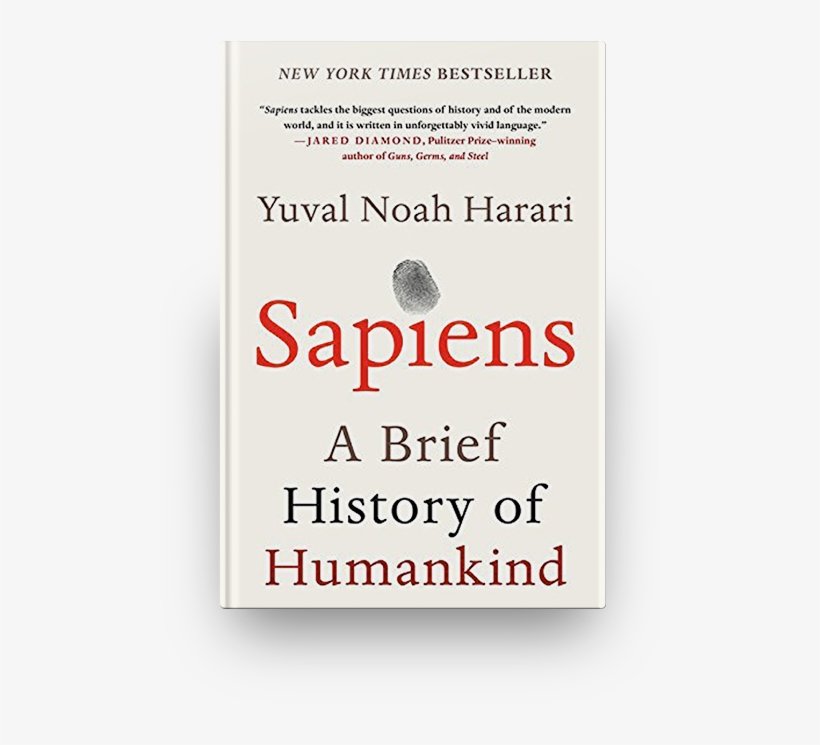Human evolution has always remained a curiosity from generation to generation. Peoples are in a strange quandary to know how were their ancestors evolved into the present modern human beings. Yuval Noah Harari, a historian, and venerated writer digs deep and tries to find out how modern man has been changed since time immemorial and at last it becomes a species that has no parallel to its intelligence.
He divided the book into four parts: cognitive revolution, agricultural revolution, the unification of humankind, and finally the scientific revolution. In accordance with Dr. Harari, three revolutions – the cognitive revolution which was occurred around 70,000 years ago, the agricultural revolution which was occurred around 12,000 years ago, and the most recent industrial revolution which was occurred around 500 years ago – changed the living style of the people. Furthermore, he added two basic theories of Human evolution: first, interbreeding theory, and second, replacement theory.
Prior to the cognitive revolution, there were Neanderthal, Homo Erectus, and the most primitive species – Chimpanzees, whom the writer named the sister species of the modern homo sapiens. Homo Sapiens came into this world around 70,000 years ago in the African continent and that was the era of the cognitive revolution. Homo Sapiens at that time was the most modern and intelligent species and knew various techniques of warfare. With the passage of time, they began to expand in the other areas of the world and confronted Neanderthal in the areas of what we now call the Middle East. They defeated the Neanderthal and subsequently married Neanderthal women. Neanderthals, with the passage of time, demised entirely but their DNA can be traced yet today in the peoples of the Middle Eastern countries. Homo Erectus was, at that time, living in the areas of present-day’s southeast Asian countries. Homo Erectus was a comparatively small people. Their body size was small, their eyes were narrow and they even couldn’t lift much weight as the Neanderthal or Homo Sapiens could do. Dr. Harari says, today in the people of China, Japan, and Korea the DNA of Homo Erectus can be traced. According to replacement theory, the species that succeeded in sparing their lives from Sapiens during the war would become victims of ecological changes and then eventually perished altogether.
In the second part of the book, the agricultural revolution and the changes that it brought about have been discussed in a very simple and precise manner. Most points, the writer discussed, are about societal changes as in the wake of the agricultural revolution the societies began to change from small intimate societies to complex societies. The people began to accumulate food and money and started to build permanent houses for their offspring. That was the era when actually capitalism was born and the people became more selfish and self-centered. In addition, various other facts like scientific inventions and sea voyages which were caused to new discoveries and the industrial revolution have also been written at length.
The third part of the book deals with the unification of humankind. Three rudimentary elements – empires, money, and religion – have been extensively discussed in this regard. The writer, in order to clarify his stance, sketched ancient civilizations like Sumerian, Babylonian, and Mesopotamian and portrayed a unique but beautiful picture of those ancient people. How were they lived, how were their ceremonies being celebrated and what were their ways of performing religious rituals? Secondly, religious evolutions: how were various religions of the world evolved and nourished by their respective followers, why some religions of the world like Christianity and Islam have grown up so rapidly while others have become rare or have fewer followers, and the concepts of gods and goddesses have also been discussed with full length.
In the last part, the industrial revolution and its offshoots have been explained in a unique style. On the one hand, the industrial revolution brought forward many progressive opportunities for humankind and facilitated the people in every aspect of their lives but, on the other hand, it brought forward a lot of catalysts like rapid climatic changes and population growth that have wreaked havoc since the dawn of the industrial revolution. The writer also gives some facts and figures in order to clarify the readers’ concepts that how the population is growing so rapidly and it could become a severe threat to humankind in the years to come. Moreover, some further speculative theories have also been discussed with some examples and with some profs. According to the writer, Homo Sapiens is now going to change in Homo Deus – the era of the machines. He has discussed Homo Deus at length in another separate book but in this book, he does only touch on the upcoming era of the machines – the robotic age.
The book as a whole has been written in a unique and lucid language while some pictures also have been given to visualize the words of the writer. The book is highly beneficial for the people who are interested in knowing the history of their own selves.
